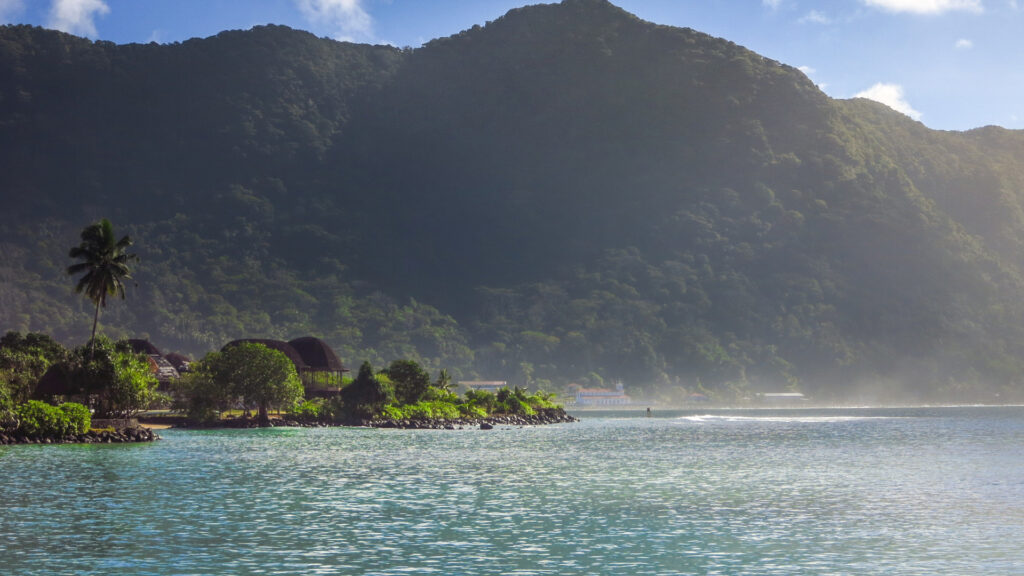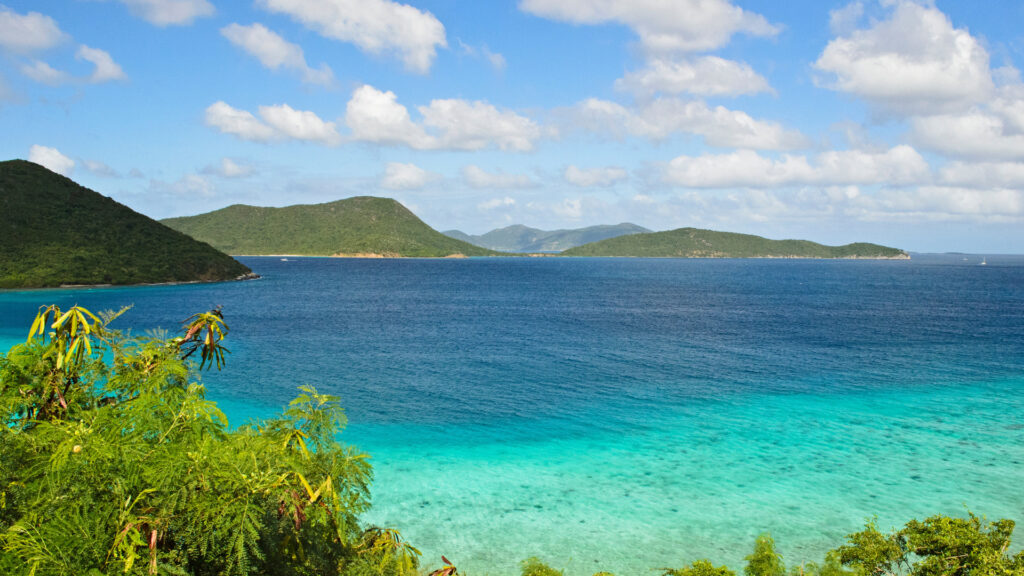Table of Contents Show
Millions of people visit America’s national parks yearly. Many of the parks have become bucket list travel locations for travelers.
You’ll find that most RVers will bring their rig to many of these locations. Doing so can allow you to stay near, or sometimes even in, the national parks. However, not all national parks are friendly to RVs. Some national parks require you to leave your RV.
Today, we’re sharing some incredible national parks worth visiting, but you’ll have to leave your RV behind. Let’s dive in!
How Many National Parks Are in the United States?
There are 63 national park units with the designation of “national parks” that the National Park Service manages. However, they maintain 423 individual units. When most people ask this question, they’re referencing the 63 parks with the national park designation.
However, many NPS officials often answer with 423 to remind us that NPS represents more than just the 63 parks. The other 360+ parks also deserve recognition and attention.
Can You Drive an RV in National Parks?
Many national parks have RV-friendly roads, but you should proceed with caution. Not every national park is accessible in an RV, and not every street in a national park can accommodate one.
You’ll want to research if you plan to take your RV into a national park. You don’t want to create a sticky situation for you, your RV, and other guests.
If you can’t find an answer, call one of the visitor centers and speak to a ranger. They’ll likely want to know where you plan to travel and the size of your RV. They don’t want you to be in over your head any more than you.
Many national parks have RV-friendly campgrounds. If that’s the case, the roads to and from the campground will likely accommodate you. However, you’ll want to check the length restrictions before booking a campsite.
What Size RV Is Best for National Parks?
Most RVers who want to spend time in national parks will often choose rigs no more than 30 feet long. If you can, stay between 25 and 27 feet.
This will help you avoid any issues while navigating in most national parks. Those who can stay under 20 feet will likely never experience a problem. However, it’s not only the length you have to worry about regarding the size of your RV.
The height of your RV is also something you need to consider. Some parks have height restrictions for tunnels or certain sections of the park.
For example, Zion National Park’s Zion-Mount Carmel Tunnel requires any vehicle over 11 feet, 4 inches, to get a special permit to pass through the tunnel. Any RV over 13 feet, 1 inch, or 40 feet long, cannot pass through the tunnel.
National Parks You Definitely Can’t Visit in an RV
We’ve visited some incredible national parks in our RV during our travels. However, there are some you can’t stay in an RV. But just because you can’t take your RV doesn’t mean you shouldn’t see them.
American Samoa National Park
Location: Vatia, American Samoa
Why It’s Not RV Friendly: While many national parks are easy to visit, American Samoa isn’t one of them. It’s 2,500 miles southwest of Hawaii. It’s nearly 5,000 miles from Los Angeles.
That’s incredibly far away. Even if there were infrastructure to accommodate an RV, it would take weeks, possibly even months, to ship your RV there.
But Why It’s Worth A Visit: While many famous national parks have bears, mountains, or substantial facilities, that’s not the case at American Samoa National Park. Instead, you’ll find coral reefs, rainforests, and a volcano.
The national park contains three sections of islands providing incredible views of rugged cliffs, glistening beaches, and rainforests. The park is home to some of the most unique birds and fish on the planet.

Isle Royale National Park
Location: Northern Michigan
Why It’s Not RV Friendly: Isle Royale National Park sits in the middle of Lake Superior, approximately 50 miles from Michigan’s Upper Peninsula.
Access to the park is only possible by seaplane or ferry. While no vehicles are allowed on the island, it wouldn’t matter even if they were, as there are no roads.
But Why It’s Worth A Visit: If you’ve ever traveled to the Upper Peninsula of Michigan or Minnesota, you know this entire region is stunning. If not, you should add it to your itinerary.
Isle Royale National park is open from April 16 through October 31 yearly. The island closes from November 1 through April 15 due to extreme winter conditions.
Anyone who enjoys hiking, boating, canoeing, or kayaking will love this national park. Because it’s not easy to reach, you don’t have to worry about battling nearly as many crowds.
While many national parks measure their attendance in millions, Isle Royale peaked at 25,894 in 2021. Some of the busiest national parks experience this daily during the peak season.
Isle Royale National park is an isolated, rugged island ripe for adventurers. You can find the peace and refuge that only a rugged island wilderness can provide.

Dry Tortugas National Park
Location: Southern Florida
Why It’s Not RV Friendly: The park sits 70 miles west of Key West, Florida. As a result, it’s another park accessible via boat or seaplane. If you want to visit this national park, it will require you to do some planning.
But Why It’s Worth A Visit: Dry Tortugas National Park is home to the third-largest barrier reef in the world. There are multiple snorkeling spots throughout the park where you can view sunken Spanish ships, treasure sites, and some of the most incredible aquatic life.
The water depths range from four to seven feet, so it’s perfect for newbies and experienced snorkelers. Whether you’re into marine life or history, this is one national park you won’t want to miss!
Gates of the Arctic National Park & Preserve
Location: Northern Alaska
Why It’s Not RV Friendly: This remote wilderness park has no roads or trails. Reaching this park requires using an air taxi or an extremely long hike. So keep the RV at home if you visit this national park.
But Why It’s Worth A Visit: Gates of the Arctic National Park typically welcomes 10,000 to 12,000 visitors yearly. In 2021, the park received 7,362 visitors. You could visit the park and feel like you have all 13+ million acres to yourself.
There is no infrastructure within the park. Visitors can experience the rawness of Alaska in its original state. You can enjoy views of the majestic mountains in the landscape and see evidence of the massive glaciers carving through the valleys. You may even glimpse the northern lights if you’re lucky.
Pro Tip: Do you have a national parks pass?You may be throwing away money if you don’t have one!
Virgin Islands National Park
Location: Virgin Islands
Why It’s Not RV Friendly: Visiting Virgin Islands National Park is not easy and will take effort to reach. Because it’s in the Virgin Islands, you’ll likely have to fly there. While your RV may feel tiny sometimes, there probably won’t be an option to check it at the airport.
As a result, you’ll need to fly to St. Thomas. You’ll need to rent a car or take a taxi to Red Hook, St. Thomas. Hop on a barge or ferry to Cruz Bay, St. John. Once you arrive at St. John, it’s an easy walk from the ferry terminal to the park’s visitor center.
But Why It’s Worth A Visit: Virgin Islands National Park is a stunning national park. It has beaches, tropical forests, and some great historical sites displaying the island’s rich history. The valleys and beaches are fun to explore, and the bright blue waters are perfect for splashing in and cooling off.
Bring your snorkeling gear and look for sea turtles and jungle ruins in the waters. You can explore some of the many offshore islands by kayaking around the island and through the park. It’s one experience you won’t forget!

Katmai National Park & Preserve
Location: Southern Alaska
Why It’s Not RV Friendly: Accessing Katmai National Park & Preserve requires a plane or boat. Driving your car, let alone an RV, to this park is not possible. It’s a remote and rugged section of Southern Alaska. The terrain is brutal and unforgiving. Ensure you prepare if you choose to visit!
But Why It’s Worth A Visit: A visit to Katmai National Park & Preserve is an excellent opportunity to spot a brown bear. There is a very high population of bears in this park, so be aware and have plenty of space on your phone to capture pictures.
The park is also home to some of the best rafting and hiking in the world. You can hike the Valley of 10,000 Smokes, do some backcountry camping, and kayak the Savonoski Loop. You won’t struggle with filling your time in this park!
Channel Islands National Park
Location: California
Why It’s Not RV Friendly: While you can access the park’s visitor center in Ventura by car or RV, visiting the park requires using the park’s concessionaire boats or a private boat. Accessing the island in your personal vehicle, including an RV, isn’t possible.
But Why It’s Worth A Visit: If you love diving, kayaking, or swimming, Channel Islands National Park is worth a visit. The park’s five islands (San Miguel, Santa Rosa, Santa Cruz, Anacapa, and Santa Barbara) are relatively untouched and allow you to explore some of the most breathtaking views in and out of the water.
Half of the park’s 249,354 acres are under the ocean. The island has thousands of years of history, and active archaeological expeditions constantly discover new findings. Visiting the park allows you the opportunity to see them for yourself.
Keep in Mind: National Parks are known for their beauty, but which park is the Ugliest National Park?

Visit These Nationals Parks Without Your RV
While you may enjoy traveling in your RV and checking off national parks, it won’t be possible at every park. Seeing some national parks will require you to leave your RV behind and book a hotel or embrace tent camping.
However, some national parks are incredibly remote and dangerous. Do your research and spend plenty of time preparing for the adventure.
What national park have you visited where you couldn’t bring your RV?






